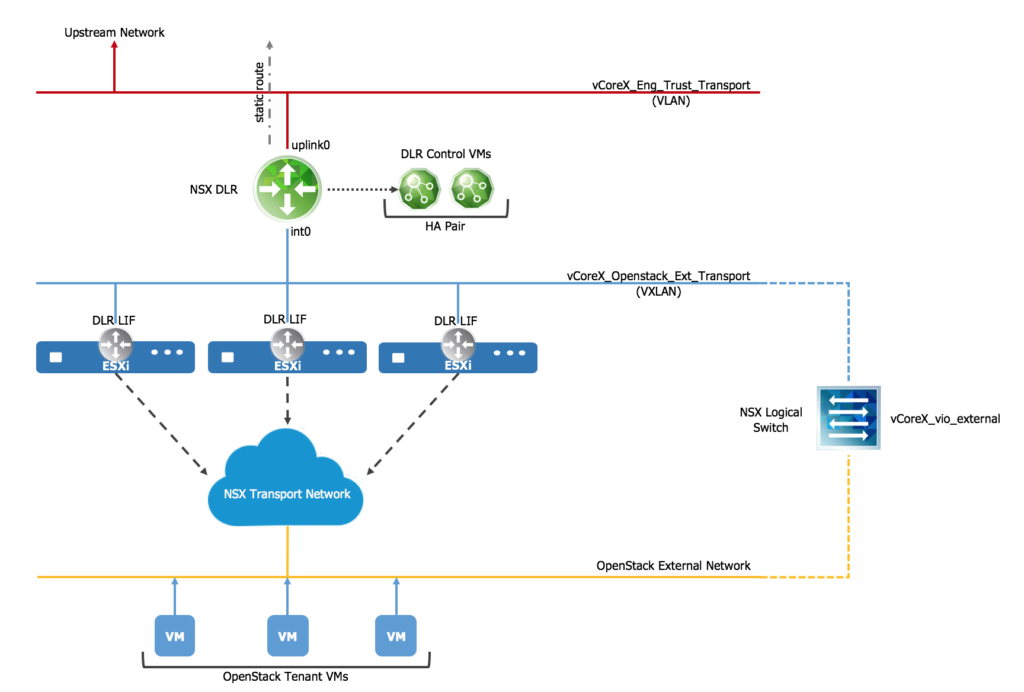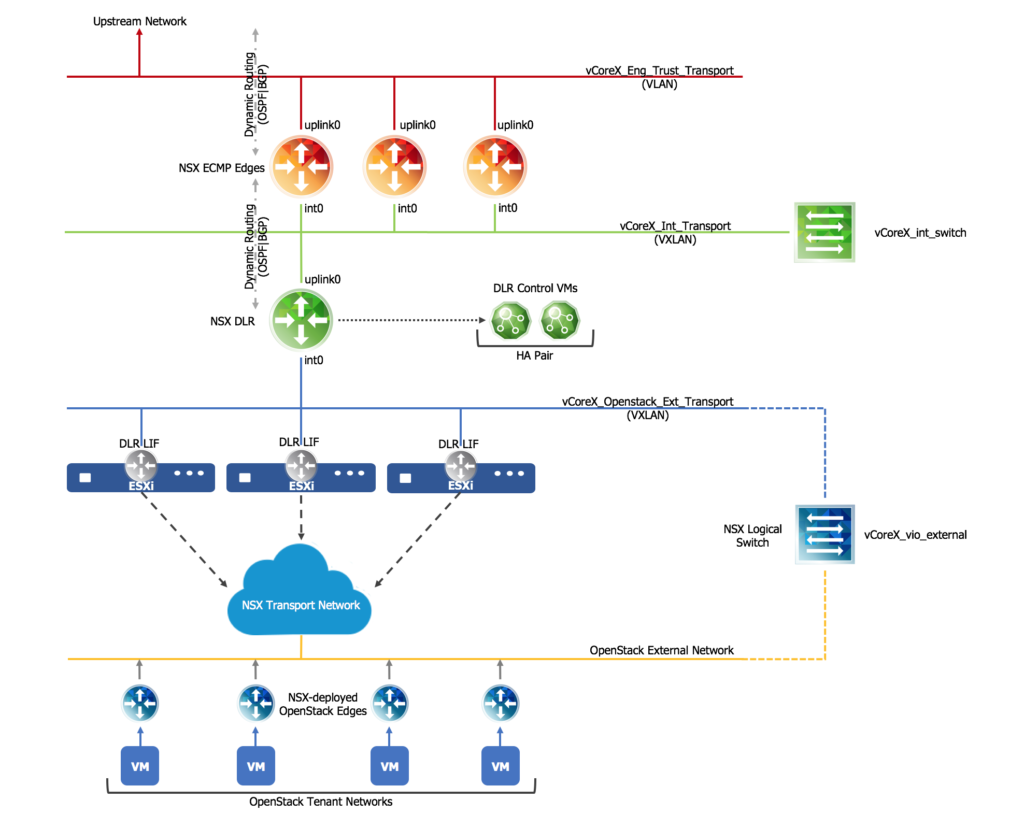While a great show, we are going to talk about something slightly different — the NSX Distributed Logical Router (DLR) Designated Instance. NSX has many great features and also many caveats when implementing some of those great features — like having a Designated Instance when using a DLR.
So what is a Designated Instance? Honestly, I did not know what it was until a conversation earlier today with a few co-workers who are a bit more knowledgable with NSX than me. Essentially a Designated Instance is an elected ESXi host that will answer all new requests initially — also known as a single-point of failure.
Let’s look at the logical network diagram I posted yesterday.

Pretty sweet right?
The issue is when the DLR is connected directly to a VLAN. While technically not a problem — it does exactly what you’d expect it does — it results in having to have one of the ESXi hosts in the transport zone act as the Designated Instance. The result is that if the Designated Instance ESXi host encounters a failure, any new traffic will fail until the election process is complete and a new Designated Instance is chosen.
So is it possible to not need a Designated Instance when using a DLR? Yes.
It involves introducing another logical NSX layer into the virtual network design. If you saw my tweet earlier, this is what I meant.
I like #NSX, but sometimes I think it adds a little too much complexity for operational simplicity. #vExpert #VCDX #KeepItSimple
Adding a set of ECMP edges above the DLR and connecting the two together will eliminate the requirement for NSX to use a the Designated Instance. Here is what an alternative to the previous design would look like.

Essentially what I’ve done is create another VXLAN, with a corresponding NSX Logical Switch and connect the uplink from the DLR to it. Then the ECMP Edges use the same Logical Switch as their internal interface. It is on the uplink side of the ECMP Edge where the P2V layer takes place and the VLAN is connected.
Using this design allows the environment to use a dynamic routing protocol between both the DLR and ECMP Edges and ECMP Edges and the upstream physical network — although mileage may vary depending on your physical network. The ECMP Edges introduce additional scalability — although limited to 8 — based on the amount of North-South network traffic and the bandwidth required to meet the tenant needs. Features like vSphere Anti-Affinity rules can mitigate a failure of a single ESXi host, which you cannot do when there is a Designated Instance. The design can also take into consideration a N+x scenario for when to scale the ECMP Edges.
So many options open up when NSX is introduced into an architecture, along with a lot of extra complexity. Ultimately the decision should be based on the requirements and the stakeholders risk acceptance. Relying on a Designated Instance may be acceptable to a stakeholder, while adding more complexity to the design may not be.
Until next time, enjoy!








